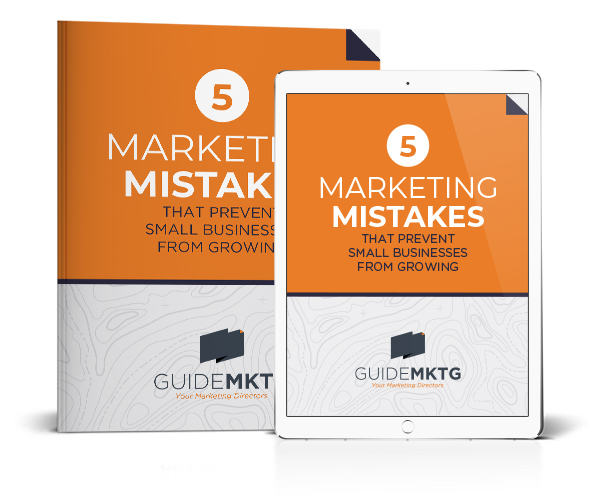Do you struggle to come up with nurture email ideas? You know you are supposed to regularly send your clients helpful information but, for many small business owners, it feels difficult to think of new and engaging ideas. After all, there is only so much you can say about (insert your industry here). Right?
Wrong.
You can plan a year’s worth of nurture email content in an hour or less by following these four steps.
What are lead nurturing emails?
Before we dive into the system for brainstorming nurture email ideas quickly and efficiently, let’s recap what lead nurturing emails are and what makes a nurture email valuable.
Lead nurture emails are emails you regularly send to your clients. The goal of these emails is not to sell something but to simply provide helpful information.
When you consistently show up in a client’s email inbox with valuable content, you build a trusting relationship with them, reminding them that your business exists and making them more likely to do business with you (or refer you to someone they know) when they’re ready.
6 Tips for Writing Valuable Lead Nurturing Emails
To ensure that your emails are providing value to your customers, instead of annoying them, make sure every nurture email you send follows these six tips:
- Nurture emails are short — around 300 words or less.
- Each email is about a single topic or issue (we call this the “controlling idea”)
- They are NOT a company newsletter.
- They offer value or solve a problem.
- They are related to your industry and the problem your company solves.
- They need a great email subject line in order to get opened.
Quickly Brainstorm a Year’s Worth of Nurture Email Ideas
Now that we are on the same page about what kind of emails you should be sending your potential clients and existing customers, let’s start brainstorming some content ideas.
During this brainstorming session, write down everything that comes to mind. There are no bad ideas. The point of brainstorming is to simply get ideas out of your head and onto paper.
You probably won’t use all of the ideas you come up with, and that’s ok. For now, just write them down and keep going.
Step 1: Use What You Already Know
Remember, you are an expert in your field. Your customers are not. That is why they hire you.
Things that may seem obvious to you are new and valuable information to your clients.
Open a new document on your computer or note on your phone (or, go old school and use a piece of paper) and start listing:
Observations
List things you have noticed or seen in interactions with clients or in your everyday life.
- What are some common mistakes you see in your industry?
- What do your customers have in common?
- What is holding your potential clients back from becoming paying customers? How could you overcome their objections?
Since we are a marketing company, some observations I might write on my list are:
- Many business owners send company newsletters thinking they are lead nurturing emails.
- Small businesses often try to DIY their marketing, hindering their growth and costing them money in the long run.
Frustrations
In this section, you get to proudly step up on your soapbox and let ’em have it — in a professional, related-to-your-industry kind of way, of course.
Think about:
- Common misconceptions about your industry.
- Things clients do that make their lives more difficult.
- Ways clients unknowingly make your job more difficult.
Here are some frustrations I have about the marketing industry:
- Small businesses lose leads because they don’t know how to clearly explain what they do.
- Designers create beautiful websites that have no calls to action, which means they won’t convert website visitors into paying customers.
- Small businesses try to copy the marketing strategy of big-budget companies or different industries (Their success doesn’t guarantee your success. You need your own strategy.)
Lessons
Now you get to put on the teacher hat. Are there simple tips and tricks related to your industry that you could share to make a potential client’s life easier?
Use the list of examples below to spark ideas. Then, jot down any topic ideas that you could turn into a simple, actionable lesson.
Sample Lessons
- A simple how-to guide
- Common problems with a simple fix
- An industry-related DIY
- Answers to commonly asked questions.
If you’d like to go beyond the questions your clients regularly ask, you can search your industry in Answer the Public and Also Asked to see what questions about your industry are commonly asked on the internet.
We use educational content frequently for our email marketing. Here are some of the lessons we’ve shared with our email list:
- What to do when your website isn’t getting any traffic.
- How to recession-proof your small business.
- How to write a catchy email subject line.
Step 2: Share Resources
Part of being an expert in your field is constantly learning more about your area of expertise. That means you are likely reading, listening, and learning more about your field every day.
Have you:
- Read any articles lately that were incredibly helpful?
- Seen a video that clearly explained something related to your industry?
- Read an amazing book that you can’t stop recommending?
If it is related to the problem your company solves, it would probably be relevant content for your ideal client as well.
Some companies create valuable content for their customers by writing blog posts, creating a podcast, or starting a YouTube channel. Others choose to be curators of content by sharing useful content that they find. Both are great tools for writing successful lead nurturing campaigns.
You can easily turn helpful content into a lead-nurturing email by writing a paragraph or two explaining why the resource is of value and how it can help your customer. Then, add a link so they can check out the content for themselves. (Don’t copy and paste someone else’s content into your email or blog; that’s a copyright violation, aka “stealing.”)
In your doc, write down all the resources you’ve encountered recently that you could potentially share with your customers.
Step 3: Keep Customers in the Loop
Remember, your lead nurturing email isn’t a company newsletter so you won’t need to share updates about what is going on inside of your company.
However, you should share updates about changes, sales, and events that will affect your clients.
These emails will be short updates letting customers know about time-sensitive changes, updates, or events.
On your idea list, write down:
- Seasonal reminders
- Events
- Sales
- Campaigns
- Important dates
Step 4: Share Success
Do you have a great testimonial you received from a happy client? Did you just finish a case study on an impressive client success story?
Don’t just publish them to your website and call it a day. Share them in your next lead nurturing email campaign!
By sharing client success, you are increasing your authority with potential customers, which is vital for turning new subscribers into paying customers.
A note of caution though: when sharing your case study or testimonial, don’t focus solely on how great your company is or what a good job you did. You want to highlight the success someone else experienced by using your products or service.
Remember, you are the guide and your customer is the hero. Don’t make your company the star. Always keep your customer in that role.
That’s it! If you’ve gone through all four steps, you likely have enough ideas for a year’s worth of nurture emails or more.
Be sure to star your new idea file or favorite the note in your phone so you can pull it up quickly any time you need to write content this year.
Writing nurture emails doesn’t have to be difficult. There are a wide variety of ways you can provide value through lead-nurturing emails. From sharing lessons and resources about your industry to keeping customers in the loop with important updates, lead nurturing emails help build a trusting relationship with potential customers and keep existing customers engaged.
If you are still dreading the idea of sending regular lead-nurturing emails to your clients, even with your giant list of ideas in hand, schedule a call with Guide MKTG. As your marketing directors, we can take lead nurturing emails, and any other marketing-related tasks, off your to-do list so that you can focus on everything else.





